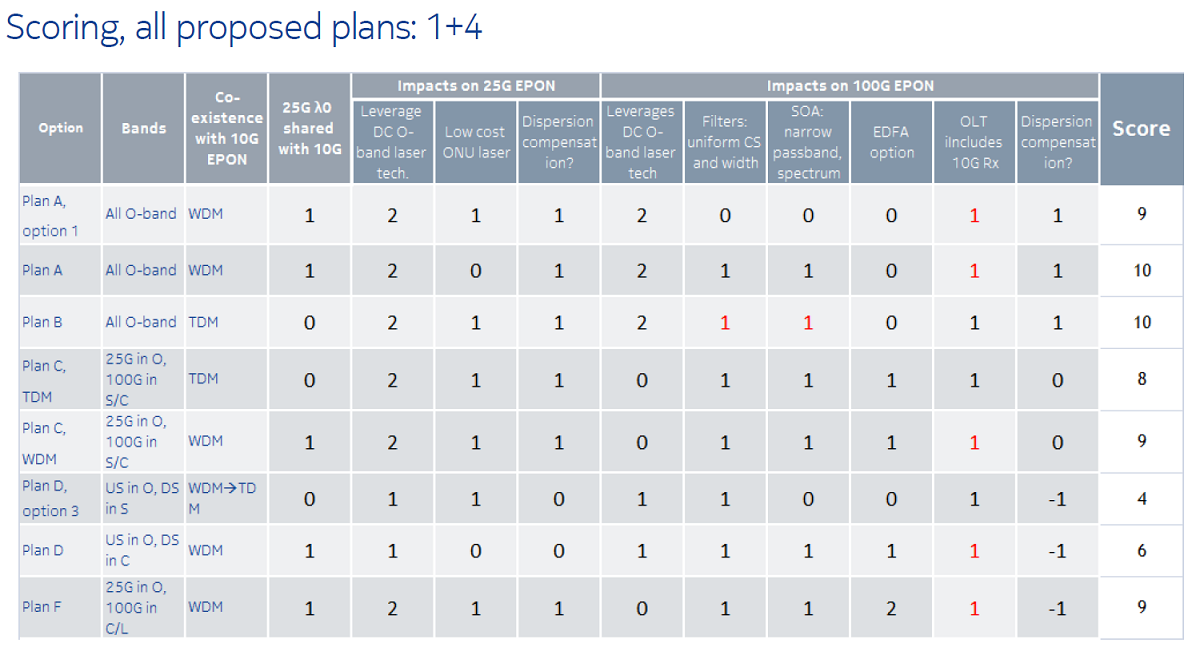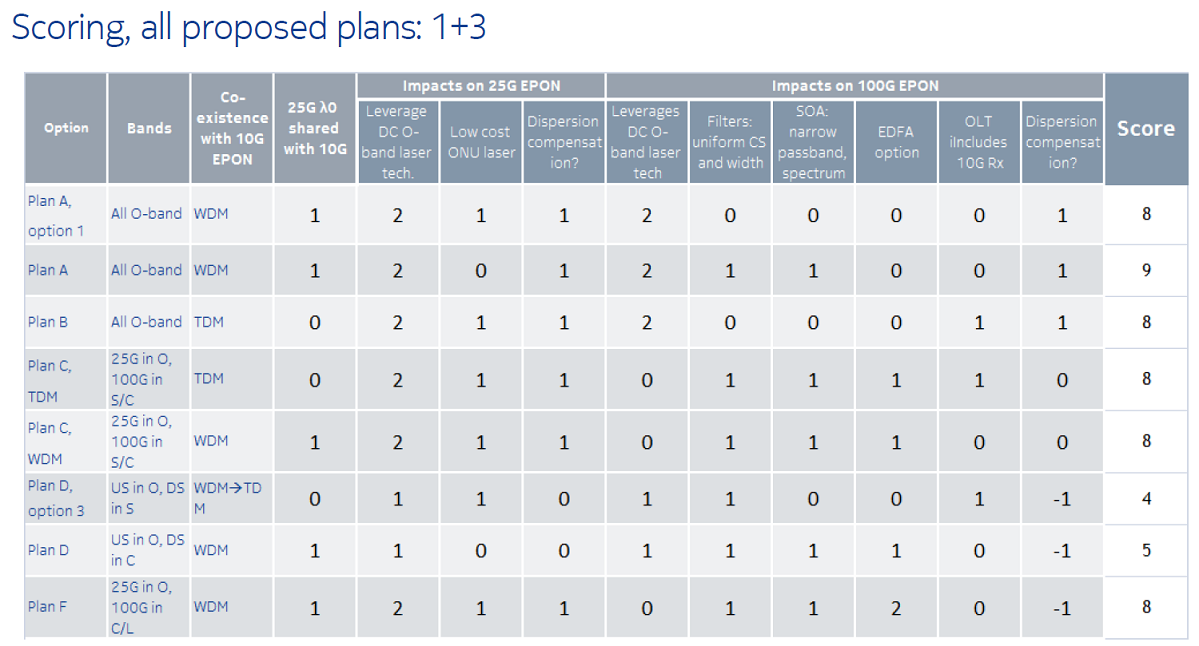Dear Ed:
Thanks for your home work and effort on the comparison.
I am sorry that I missed the comparison discussion on the Thursday morning in last meeting, so I may miss something.
But I just found the following comparison mode can’t really reflect the advantage and disadvantage of different plans, especially for 100G EPON.
For example, Plan D , which is “putting all upstream in O band, downstream in C/S band, at least 800GHz channels spacing” gets a distinct lower score (only 6 score) than plan F (9 score), this seems mean that
plan F is a much better plan than plan D.
I just can’t understand why this can happen.
Plan F is putting downstream in L band , upstream in C band, using 100GHz channel spacing (very narrow channel spacing), Such 100G system should be much more expensive than plan D, but it just can get much higher
score in the follow comparison table.
I have tried a further extreme solution, if there is a plan G: upstream and downstream are 8 consecutive 25GHz spacing wavelength in C band , such as US: 193.0, 193.025, 193.05, 193.075THz, DS: 193.1,193.125
193.15.193.175THz, both upstream and downstream channel spacing are 25GHz , DS/US gap are also 25GHz, such 100G system should be very very expensive but it still can get a much higher score than plan D based on the following model.
So from me ,the evaluation model in the following table still needs further discussion and optimization , before we really can compare different solutions.
Here are my some comments and concerns on this model shown in the following tables:
1.
In this model, some items very important to the cost haven’t been taken account in, such as laser central wavelength accuracy requirement(+/-0.1nm or +/-1nm, or +/-10nm…) , guard band width(2nm or
10nm …), downstream/upstream gap, different launch power levels , laser type (MZM, EML or DML), cooled or uncooled
2.
Some items are on much lower weight but have the same score/weight with other item, such as Uniform channel spacing and width(a lower case item ), the impact on the cost are much smaller than “Low
cost ONU laser”(the most important factor , from me) , while they have same weight on the overall comparison.
3.
Generally the cost of ONU are more important than OLT, but it seems that the model mainly consider the OLT(The only item related ONU is the low cost ONU laser, while only have 1 score value).
There are still some items which are not on the same level with others , such as EDFA option and “One 25G throughput shared w/10G”, I am not sure if one can cancel or compare with the other one.
|
|


From: Harstead, Ed (Nokia - US) [mailto:ed.harstead@xxxxxxxxx]
Sent: Monday, September 26, 2016 11:40 PM
To: STDS-802-3-NGEPON@xxxxxxxxxxxxxxxxx
Subject: [802.3_NGEPON] wavelength plan updates
All,
Here are two documents that we would like to review on this week’s consensus call. They are:
·
Wavelength plan comparison update: updated version of 25G/50G/100G EPON wavelength plan comparisons (harstead_3ca_4b_0916) per discussion in Fort Worth, with the plans re-scored. Updates are summarized on slide 2.
·
802.3ca wavelength plan homework Sept 2016, which is an updated version of harstead_3ca_5_0916—motly added specific contributions that need to be resolved. This document supersedes harstead_3ca_5_0916. It can be a living document
if we add more items to it.
Bill will present as I will not be available for the call.
Ed